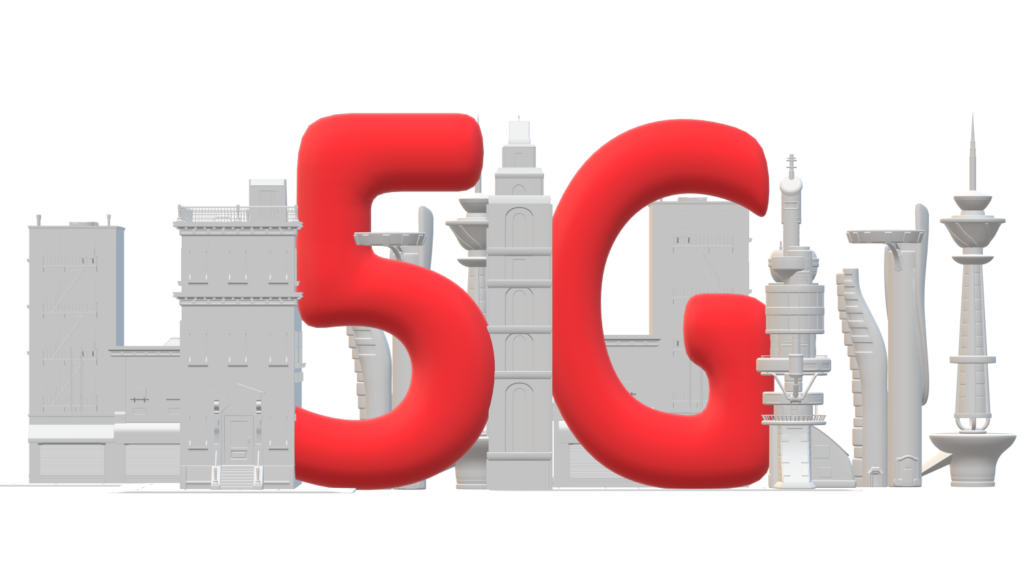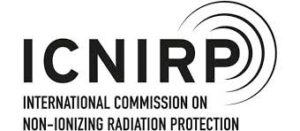5G – Public Health Debate

Summary
Final Takeaway: Government researchers, industry scientists, and academics from the United States, Asia, and Europe agree that radiation frequencies used by wireless communications, including 5G and 4G LTE, are safe and do not pose any dangers to public health.
Researchers at Cornell University have summarized the public health debate with the following three conclusions:
1. In contrast to lower-frequency fields, the millimeter wave band used by 5G does not penetrate beyond the outer layer of the skin, thus, deeper tissues are not exposed or heated. Tissue heating is the main, potentially harmful effect of exposure to radiofrequency (RF) radiation, and this does not occur with 5G signals.
2. The introduction of 5G is unlikely to change overall RF radiation exposure levels. People will continue to receive a majority of RF exposure from their own cell phones and other wireless devices, not from signals transmitted by cell towers or base stations.
3. RF exposure from cellular base stations, including 5G installations, will remain well below current international exposure standards and guidelines in nearly all public locations.
5G networks have been implemented globally since 2018. 5G networks enable faster speeds and can connect more devices than existing 4G LTE networks by utilizing higher frequencies of radiofrequency radiation (RFR – sometimes called millimeter wave or mmWave radiation). However, this higher frequency radiation has shorter functional range, requiring denser infrastructure - often in the form of small cells that must by placed close together (for example, every few city blocks) in order to provide reliable service [1] . While commercial use of RFR began over a century ago, the enormous increase in RFR exposure from wireless technologies has led regulatory and scientific bodies to reassess RFR public safety standards. These institutions largely agree that limits on RFR exposure set for previous generations of wireless technology are sufficient to regulate 5G networks. (see the "How are 5G and other radiofrequency ranges regulated?" section below). The new technology – and additional and visible infrastructure – however, has brought renewed attention to the potential impact of RFR on human health. [2]
Goals
This resource aims to provide a neutral view of the academic, regulatory, and industry perspectives within the public health discussion surrounding 5G, with a focus on its potential to cause cancer. This resource describes how RFR is regulated and what safety regulations are currently employed around the world. Next, this page summarizes two perspectives – the Precautionary view and the Move Forward view – which illustrate the varying levels of confidence in 5G safety, based on the current scientific literature. A list of resources is provided to demonstrate the degree of scientific consensus backing each perspective, and examples of the arguments supporting each perspective are summarized. Lastly, this resource outlines several case studies that help illustrate how this debate is unfolding in communities at various stages in the 5G implementation process.
A secondary goal of this resource is to help clarify certain aspects of 5G and the controversies that surround it. As a highly technical topic, some components of the public debate have been exaggerated, ignored, or conflated. In the Helpful References section below and throughout this page, this resource addresses some technical concepts and common questions such as:
How is the public health debate around 5G different from the debate around previous generations of wireless tech?
Why is the debate still happening after decades of research?
What other concerns do communities have regarding 5G implementation?
How much control do local governments have over 5G deployment? Should they have more?
Overview
How are 5G and other radiofrequency ranges regulated in terms of public health?
Generally, the institutions that determine RFR regulation have deemed current health and safety standards sufficient to cover 5G technologies. This is because widely accepted international guidelines and regulations are informed by research literature that covers RFR up to 300 gigahertz (GHz), which includes frequencies used by 5G. In response to renewed concerns regarding 5G and health, however, the International Commission on Non-Ionizing Radiation Protection (ICNIRP) updated their RFR guidelines in March of 2020. ICNIRP is an independent scientific commission formally recognized by WHO and the International Labor Organization (ILO) as the international authority on non-ionizing radiation. The new ICNIRP guidelines - the first update from ICNIRP regarding RFR since 1998 - provide more detailed and conservative suggested limitations for RFR above the 6 GHz frequency, a specification which signals ICNIRP's desire to address public concerns about increased exposures to high-frequency RFR as 5G networks and technologies become more prevalent.
These safety standards, however, focus on the thermal effects of RFR, as the global scientific community widely accepts that prolonged exposure to RFR at levels that can heat tissue is dangerous. To ensure that RFR from wireless devices is below the heating threshold, governing bodies and expert organizations set limits or guidelines according to Specific Absorption Rate (SAR) - the amount of radiation absorbed by the body, measured in watts of energy per kilogram (W/Kg).
Non-thermal effects of RFR on the body are less certain. Research over the past several decades has attempted to determine whether causation exists between prolonged or cumulative RFR exposure and negative health outcomes, such as certain types of cancer. Existing research has not shown sufficient causation to compel regulatory agencies to adjust limits to account for potential non-thermal effects of RFR.
Below are several examples of the prevailing regulatory approaches and standards for RFR, including 5G frequency bands. The two primary international standards are either based on or approximate ICNIRP guidelines or the regulations enforced by the U.S. Federal Communications Commission (FCC). China, a global leader in the development of 5G technology, is an outlier regarding RFR regulation, having adopted more conservative RFR exposure standards in some regards, diverging from international norms.
5G Guidelines and Regulations
Debate Perspectives
Over the past several decades, a large body of research literature has accumulated regarding the possibility of negative health impacts resulting from RFR exposure. Within this literature, including recent papers, a debate persists about how to avoid health effects while balancing technological progress and implementing 5G systems. This section provides samples from the peer-reviewed research literature from both sides of that debate.
A paper published in 2000, "Thermal and Nonthermal Mechanisms of Interaction of Radio-Frequency Energy with Biological Systems" by Kenneth R. Foster, then a fellow at the Institute of Electrical and Electronics Engineers (IEEE), summarized the challenge inherent in this debate:
"... There are many mechanisms, both linear and nonlinear, thermal and nonthermal, by which RF or broadband electric fields can interact with biological materials."
Concerning RFR interaction with the body, he concluded:
"... experimental evidence is frequently unclear. Many studies that report effects are exploratory in nature, or subject to technical criticism, or the effects are close to the limits of statistical detection. Many reported effects find conventional explanations or simply disappear when followup studies are conducted under better controlled conditions. It is the continued interplay of theory and experiment that creates reliable knowledge, and this has not even begun for many reported bioeffects."
Many of these factors, noted by Foster 20 years ago, continue to pose challenges as the research community attempts to close this gap and definitively end the public health debate around 5G.
The Precautionary Perspective
Research has failed to support a causal link between RFR exposure and adverse health effects in humans at FCC-approved levels, but this could be due to research limitations rather than a lack of evidence. Therefore, deployment of 5G technologies should proceed with caution, and in parallel with rigorous continued research and willingness of government regulators to reassess and revise limits on RFR as new information becomes available.
The Move-Forward Perspective
After decades of research of the radio frequency radiation associated with cell phone and cell network infrastructure, there is no definitive proof that 5G poses health risks at FCC-approved levels. The benefits of 5G technologies are vast, and they should be deployed quickly to provide as many people and communities with those benefits as possible, as soon as possible.
5G Rollout Issues
Articles of Interest
- How some cities are attracting 5G investments ahead of others - WP
- The Future of 5G: The Bitter Battle for Local Control – govtech.com
- Communities Are Fighting 5G, Permit by Permit - CityLab
- Enabling opportunities: 5G, the internet of things, and communities of color - Brookings
- The Great Small-Cell Debate: Testing Equipment In Severna Park Raises Questions About Health – The Severna Park Voice
- New York: Will New York halt for 5G health concerns?
- The U.K Bans Huawei and its 5G Equipment
- EU countries sound alarm at growing anti 5G movement
Note on Methods and Sources: To maintain focus on the scientific consensus supporting each argument, the Debate Perspectives section only links to studies published in peer-reviewed journals, resources developed by governing bodies, and information published by generally trusted scientific and medical institutions (such as the World Health Organization or the American Cancer Society). Resources are intended to represent the most recent research available, and no resources will be linked that are older than 20 years. Concerning the Community Case Studies section, news media sources are linked in order to convey the arguments and perspectives of different stakeholders, and to better illustrate the debate as it is currently playing out in communities.
Resources:
[1] Sources: "What Is 5G? Here’s What You Need to Know About the New Cellular Network" - The New York Times;
This resource from the NYU Tandon School of Engineering;
MmWave Massive MIMO: A Paradigm for 5G by S. Mumtaz, J. Rodriguez, and L. Dai
[2] Sources: "A Short History of Radio" - FCC,;
"RF Safety FAQ: How Safe are Mobile and Portable Phones?" - FCC;
“Differences Between the ICNIRP (2020) and Previous Guidelines” - ICNIRP;
"The 5G Health Hazard that Isn't" - The New York Times





